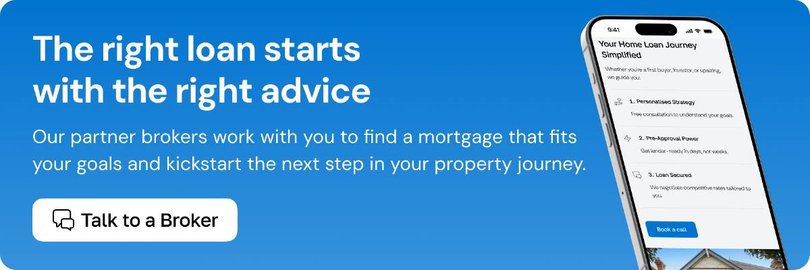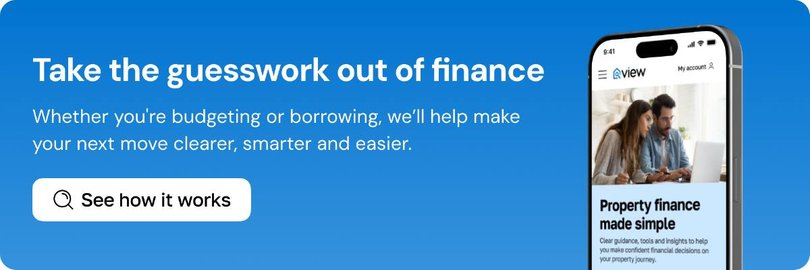Expert Opinion: How to save thousands on your home loan as a first home buyer or refinancer

If you've been with the same lender for years, you might be a victim of the "loyalty tax"-a term for the higher interest rates long-term borrowers often pay compared to new customers. In a competitive lending environment, this inertia could be costing you thousands of dollars a year.
With the Reserve Bank leaving interest rates on hold this week, competition among lenders is heating up, creating the perfect opportunity for all borrowers-from seasoned homeowners to first home buyers-to make sure they're on the best possible deal.
Sign up to The Nightly's newsletters.
Get the first look at the digital newspaper, curated daily stories and breaking headlines delivered to your inbox.
By continuing you agree to our Terms and Privacy Policy.Jessica Brady, finance expert at View.com.au, warns that too many Australians are falling into the trap of sticking with their existing bank and paying more than necessary.
"By not looking at what product or what rate you're on, it could be costing you thousands of dollars a year, if not tens of thousands over the lifetime of your loan," Ms Brady said. "Competition is good, and it's good for anyone with a mortgage."
How to Stop Paying the Loyalty Tax (For Refinancers)
The key to avoiding this "tax" is proactivity. Ms Brady recommends reviewing your mortgage regularly, ideally every 12 months, as banks often reserve their sharpest rates for fresh borrowers.
1. Go Back to Your Current Bank Your first step should be to approach your existing lender. "Go back to your bank and make sure that they are giving you the rate that they would give to new customers, or you can go through a broker who can go wider than the bank you're currently with to see whether there's an alternate lender that will give you a better deal," Ms Brady advises.
2. Don't Fear the Refinance If your bank won't budge, it's time to shop around. "The worst your bank can say is no," Ms Brady explained. "But if you don't ask, you could end up paying thousands more than you need to."

While the paperwork or potential fees of refinancing can feel daunting, Ms Brady stresses the importance of weighing up the true cost against the potential long-term savings.
"Always understand the details. So, if you're looking at just the headline rate, you want to understand: what are the product features? Is it going to match what you currently have? Are you going to lose anything? Are there any annual fees that you need to consider? Ask all of the right questions before you make any big decisions."
For households already stretched by higher living costs, checking your mortgage rate is one of the quickest ways to free up extra cash. As Ms Brady puts it: "Why give the bank extra money if you don't have to?"

First Home Buyer Checklist: Get Your House in Order
For first home buyers, getting the best deal starts before you even find your dream home. Preparation is key to a smooth and cost-effective purchase. Jessica Brady suggests using this checklist to avoid heartache and future frustration.
1. Spring Clean Your Spending
Before a bank approves you for a loan, they want to see a history of savings, a clear picture of your income, current liabilities, and spending habits, as well as your credit history.
- Audit Your Finances: Review your income, liabilities, and expenses. Paying down any existing debts will increase your borrowing capacity.
- HECS Debt Alert: Stay up-to-date on potential changes to how HECS debt may impact your situation.
- The Paperwork Drill: Lenders will require:
- Proof of ID
- Payslips or income verification
- 3-6 months of bank statements
- A detailed snapshot of your existing debts and expenses
- A summary of your assets and saving capacity
- Proof of ID
- Payslips or income verification
- 3-6 months of bank statements
- A detailed snapshot of your existing debts and expenses
- A summary of your assets and saving capacity
- Tip: If you have a credit card, even with a zero balance, most banks assess you as if you have money owing. Consider closing or reducing the limits to increase your borrowing capacity.
2. Understand Your Borrowing Power
What you can borrow is often different from what you should borrow. Be realistic and factor in future life events.
- Run Your Own Numbers: Use a borrowing calculator for a ballpark figure, then work out a monthly repayment amount you'd be comfortable with, factoring in things like career changes, parental leave, rates, strata, and the ability to handle interest rate changes.
- Tip: The 'Mock Mortgage': Try putting the difference between your current rent/mortgage and your expected new mortgage amount into savings for a few months to see how the repayment level feels.
3. Deposit Game Plan
Getting a decent deposit is one of the biggest hurdles. Investigate government initiatives you may be eligible for:
Initiative
Key Features
First Home Guarantee Scheme
5% minimum deposit, no Lenders Mortgage Insurance (LMI).
Regional First Home Buyer Guarantee
5% minimum deposit for eligible regional buyers (10,000 places available 25/26 FY).
Family Home Guarantee
2% minimum deposit for single parents/guardians (5,000 places available 25/26 FY).
Help to Buy
Allows buyers to purchase with an equity contribution from the Government (check availability).
Stamp Duty Concessions
Eligibility criteria vary by State/Territory.
You could also consider paying LMI for a lower deposit or having a Guarantor.
- Tip: If you are buying your first home to live in, you can make additional contributions to your Superannuation and use them under the First Home Super Saver Scheme (FHSSS). Always read the fine print to check your eligibility.
4. Consider Which Type of Loan Fits You
Not all home loans are created equal. You need to look beyond the headline rate to find the right features.
- Fixed vs. Variable: Decide if you want certainty (fixed) or flexibility (variable). A fixed loan may limit additional repayments or offset features, while a variable loan's rate can change. A hybrid option offers a mix of both.
- Offset Accounts: These can help you reduce the interest you pay. Some offer multiple accounts to help you budget and categorise your money.
- Redraw Facilities: May be useful for future renovations or life events.
- Loan Terms: Shorter loans mean faster repayments, but higher monthly costs.
- Tip: Look beyond the headline rate and consider what features are going to work best for your needs.
5. Get Help
If the process seems overwhelming, find a Mortgage Broker to help you navigate it. They generally have access to a number of lenders and can help find the best loan for your situation.
- Tip: Look for a broker who commits to not only getting you the initial loan but also doing annual reviews and negotiations on your behalf to help you avoid the loyalty tax in the future.
6. Pre-Approval
Getting pre-approval gives you confidence when house hunting and signals to sellers that you are serious.
- Be Aware: Pre-approval is conditional. If your financial situation changes, or the property doesn't meet the lender's criteria (e.g., location, property title), it can still fall through.
- Tip: Find out what restrictions a lender may put on your search, such as post-code blackouts. Also, confirm the pre-approval's validity period and the process for renewal.
Ultimately, getting your home loan right, whether you're buying your first place or refinancing, is all about being organised and getting support from experts.
Talk to a mortgage broker for the best deal.

Jessica Brady is a qualified Financial Adviser and leading money expert. She is on a mission to educate and empower everyday Australians to be better with money through her online money programs and via the Financially Fierce Podcast. You can learn more at jessicabrady.com.au
Originally published as Expert Opinion: How to save thousands on your home loan as a first home buyer or refinancer
